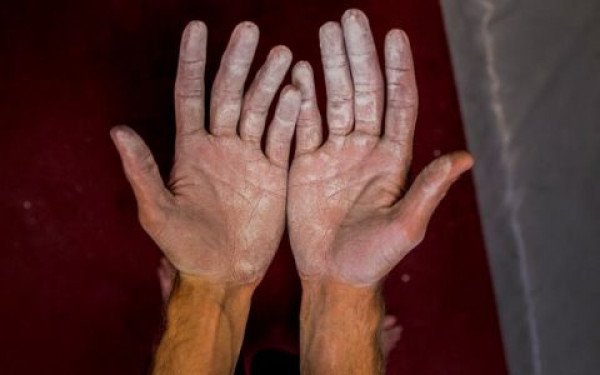
Skin Recovery Recipe
What climbers fear most isn’t heights, falls, or mangled toes—it’s finger injuries. And with good reason: While climbing is a full-body exercise, fingers make the most contact with the rock, thus taking more abuse than other limbs, especially from pockets. These contacts can injury easily. We can speak about joint or ligament trauma, bones crack or skin damage.
We collapse if you have any skin damage on your finger what you can do with it. Hand hygiene is step one in maintaining properly functioning skin. Skin varies greatly from person to person. Some are naturally drier while some are sweaty or greasy. Assess where you are in the spectrum and act accordingly: Dry hands should focus on adding moisture when cleaning, while oily hands should focus on removing that oil with standard bar soaps, which will degrease much better.
Different climbing surface
Your skin responds differently to each type of rock. Several factors are at play here, including temperature and humidity, but the texture and grain of the stone have a major impact. The more time you spend climbing in a particular area, the more the unique rock will “farm” your skin into the appropriate state. After a week of climbing, you’ll be in tip-top shape for the area’s demands. Skin tends to get softer for sandstone, quartzite, and most limestone, and much harder for prickly rocks like granite, volcanic tuff, monzonite, and the syenite porphyry of Hueco Tanks. For the fine-grained sandstone of Fontainebleau , all you gotta do is show up and let nature do the work. Areas like Chironico or Silvretta, however, require tactics and cultivation. One easy way to prep for both is to climb in the gym as much as possible. This will build friendly calluses and harden your hands for granite and volcanic tuff.
How to treat your different injury
Fraying
After a couple of days you’ll find your tips going all pink and shiny, eventually weeping a clear fluid like morning dew. This phenomenon is common at sandstone areas like Fontainebleau, and the only way to halt this erosion is to stop climbing long enough for your skin to recover and grow back. Luckily, your skin grows fast, so even a single rest day or a morning of rest after a night of solid skin care can be enough. The longer you let it go, the longer it takes to come back. If you absolutely must carry on, consider taping with friction tape.
Cut, wound
The first step in the care of cuts, scrapes is to stop the bleeding. Most wounds respond to direct pressure with a clean cloth or bandage. If it’s small, dab on a little liquid bandage, tape it up, and carry on. The bigger the split, the fewer goes you have left, and the more you try, the more you will enlarge it. After the event, have patience: A split can take up to a full week to heal.
Skin detachment
You can tape it back down and carry on, but this depends on your situation. If you have time, chill out and do proper care and maintenance. If tomorrow is the last day of your road trip, tapethat thing together and go till your finger falls off! However, don’t bleed all over the rock, for the sake of other climbers. If you elect to do surgery, carefully trim the flap away and clean again (this will hurt). Apply an antibiotic ointment, a Band-Aid, and, if you’re still climbing, a protective layer of climbing tape.
Liquid Bandage
This is an excellent alternative to the old-school method of using superglue to close a tip. A liquid bandage is flexible, waterproof, and often contains an antiseptic, which is convenient if the tip is already an open wound. It’s not as resilient as superglue, but it’s an amazing substance to brush on your skin in a light coating before applying tape. After wrapping the digit with tape, make sure to add another little dab on top to help hold the tape together. Include superglue in your kit as well, as it can help add a thin, temporary layer to your skin for just one more go.
So if you climb know the limits of your skin. It can be hurt easily this is why you need to do everything to prevent your damage. But if you got some injury handle it immediately and if it’s some big problems be patient and rested this area so you can climbearlier.
Finally, here are some recommended skin care products:
ClimbOn: This is a 100% plant based,food grade ingredients with local, slightly filtered beeswax. Their motto is: ""If you can't eat it, don't put it on your skin."" This is a multi-purpose product that can be used to soothe burns, cuts, scrapes, rashes, cracked cuticles and heels, tissue nose, road rash, diaper rash, abrasions… any skin issue that needs deep moisturizing and nourishing.
ClimbSkin: This is a similar product to the U.S. based ClimbOn, but this is a cream, not wax. The effect is similar, very effective skin care. Also can used day by day after trainings, or on a climbing trip.
Cicaplast: This pharmaceutical product is very useful and effective in repairing cuts and skin fissures, specially when you have a deep fissure between your knuckles. Recommended for drier skin types. After using Cicaplast it can be helpful to treat the area with ClimbOn to hydrate the skin.